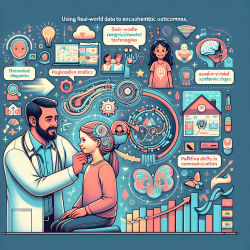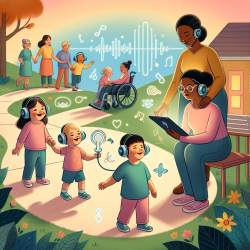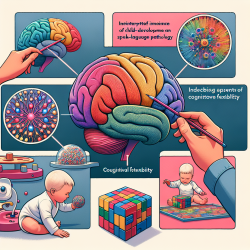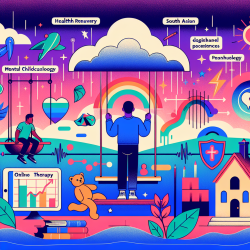Introduction
In the evolving landscape of healthcare, the integration of real-world data (RWD) with clinical trials is becoming increasingly pivotal. The research article "Innovation at the Intersection of Clinical Trials and Real-World Data Science to Advance Patient Care" by Swift et al. (2018) emphasizes the importance of this integration in advancing patient care. For practitioners in speech-language pathology, leveraging these insights can lead to improved therapeutic outcomes, especially in pediatric populations.
Understanding Real-World Data and Evidence
Real-world data refers to health-related information collected outside the confines of randomized clinical trials. This includes data from electronic health records, patient registries, and even mobile health devices. Real-world evidence (RWE) is the clinical insight derived from analyzing RWD, which can inform healthcare decisions and enhance the understanding of treatment efficacy in diverse populations.
Implications for Speech-Language Pathology
In speech-language pathology, particularly in pediatric therapy, understanding how interventions work in real-world settings is crucial. Children present with a variety of comorbidities and environmental factors that can influence therapy outcomes. By integrating RWD, practitioners can:
- Identify patterns in therapy effectiveness across different demographics and conditions.
- Tailor interventions to better meet the needs of individual patients.
- Enhance the precision of therapy by considering factors such as adherence and environmental influences.
Data-Driven Decision Making
Data-driven decision-making is at the heart of integrating RWD into clinical practice. For speech-language pathologists, this means utilizing data analytics to refine therapeutic approaches. By analyzing large datasets, practitioners can identify which interventions yield the best outcomes for specific patient groups, thus optimizing therapy plans.
Challenges and Opportunities
While the integration of RWD presents numerous opportunities, challenges such as data privacy, standardization, and interoperability remain. Overcoming these hurdles requires collaboration across healthcare sectors and advancements in data analytics technologies. However, the potential benefits, including improved patient outcomes and more efficient healthcare delivery, make these efforts worthwhile.
Conclusion
Integrating real-world data into speech-language pathology practice offers a promising avenue for enhancing therapeutic outcomes. By adopting a data-driven approach, practitioners can better tailor interventions to the unique needs of each child, ultimately leading to more effective and personalized care.
To read the original research paper, please follow this link: Innovation at the Intersection of Clinical Trials and Real-World Data Science to Advance Patient Care.










